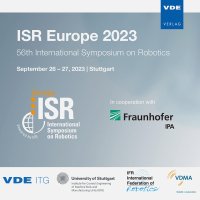Learning Multiple Radiation Source Distribution Models using Gaussian Processes
Konferenz: ISR Europe 2023 - 56th International Symposium on Robotics
26.09.2023-27.09.2023 in Stuttgart, Germany
Tagungsband: ISR Europe 2023
Seiten: 8Sprache: EnglischTyp: PDF
Autoren:
De Schepper, David; Kellens, Karel; Demeester, Eric (KU Leuven, Department of Mechanical Engineering, Campus Diepenbeek, ACRO Research Group, Diepenbeek, Belgium & Flanders Make @ KU Leuven, Belgium)
Simons, Mattias; Schroeyers, Wouter (Hasselt University, Faculty of Engineering Technology, CMK, Nuclear Technology Centre, Diepenbeek, Belgium)
Inhalt:
Over the past years, automated, robotic radiation source localisation has become of emerging interest due to a variety of reasons, e.g. disaster response, homeland security, or dismantling and decommissioning of nuclear contaminated areas. Nowadays, to perform inthe- field measurements, radiation protection officers and safety personnel are tasked with characterising an environment before a nuclear contaminated area can enter the final phase of the dismantling and decommissioning process. This involves some severe drawbacks such as the absence of any a priori information on the potentially contaminated area. Besides the potential health risks involved, this preliminary task is very time-consuming and prone to errors concerning the taken measurements and the post-processing of the obtained measurements. To further automate this task, this paper presents an approach to build a radiation model of the environment based on measurements collected by a robotic arm during in-situ laboratory tests. The task of estimating the radiation distribution in an environment is modeled as a regression problem, where the framework of Gaussian Processes is adopted. The experiments conducted in an in-situ laboratory environment demonstrate that the approach is feasible to model the radiation distribution caused by multiple radiation point sources, for both static measurements, where a robot stops moving to sample a measurement, and dynamic measurements, where a robot executes measurements in a continuous manner.


